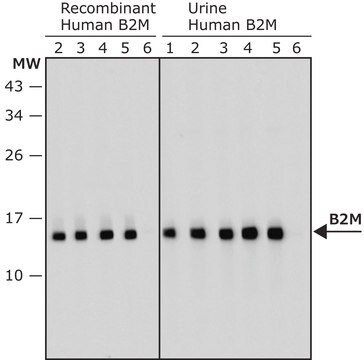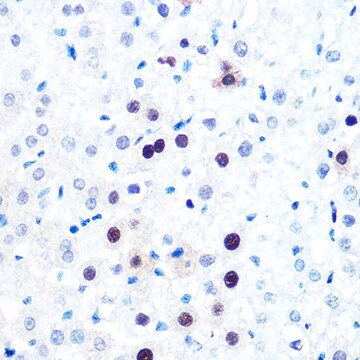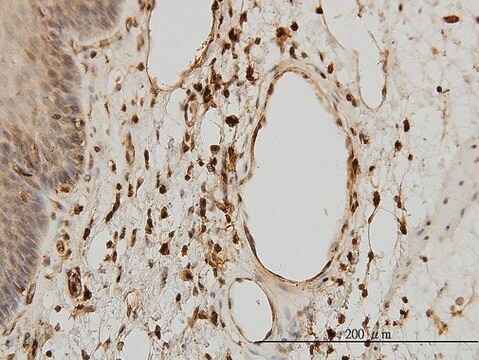SAB4200855
Anti-Cytokeratin Peptide 18 antibody, Mouse monoclonal
clone CY-90, purified from hybridoma cell culture
Synonyme(s) :
Anti-CK18
About This Item
Produits recommandés
Forme d'anticorps
purified from hybridoma cell culture
Niveau de qualité
Type de produit anticorps
primary antibodies
Clone
CY-90, monoclonal
Forme
liquid
Espèces réactives
human
Concentration
~1 mg/mL
Technique(s)
immunoblotting: suitable
immunohistochemistry: 10-20 μg/mL using heat-retrieved formalin-fixed, paraffin-embedded human placenta sections
Isotype
IgG1
Numéro d'accès UniProt
Conditions d'expédition
dry ice
Température de stockage
−20°C
Modification post-traductionnelle de la cible
unmodified
Description générale
Spécificité
Application
Actions biochimiques/physiologiques
Cytokeratin 18 is a member of the type I subfamily. Cytokeratin pair 8/18 forms the IF scaffold predominantly in simple epithelia such as the liver and pancreas. They have major role in the mechanical support of the cell, protein biosynthesis, protection from apoptosis, regulation of cell cycle progression, motility and organelle transport.3
Cytokeratins over and misexpression are linked to various diseases and more than 60 different disorders (termed as keratinopathies) have been linked to inherited cytokeratin changes. Cytokeratins (such as cytokeratin 18) serve as serum markers for malignant and non-neoplastic disorders and mutation of human cytokeratin 18 has also been associated with liver diseases.7
Forme physique
Stockage et stabilité
Clause de non-responsabilité
Vous ne trouvez pas le bon produit ?
Essayez notre Outil de sélection de produits.
Code de la classe de stockage
12 - Non Combustible Liquids
Classe de danger pour l'eau (WGK)
WGK 1
Point d'éclair (°F)
Not applicable
Point d'éclair (°C)
Not applicable
Faites votre choix parmi les versions les plus récentes :
Certificats d'analyse (COA)
It looks like we've run into a problem, but you can still download Certificates of Analysis from our Documents section.
Si vous avez besoin d'assistance, veuillez contacter Service Clients
Déjà en possession de ce produit ?
Retrouvez la documentation relative aux produits que vous avez récemment achetés dans la Bibliothèque de documents.
Notre équipe de scientifiques dispose d'une expérience dans tous les secteurs de la recherche, notamment en sciences de la vie, science des matériaux, synthèse chimique, chromatographie, analyse et dans de nombreux autres domaines..
Contacter notre Service technique








